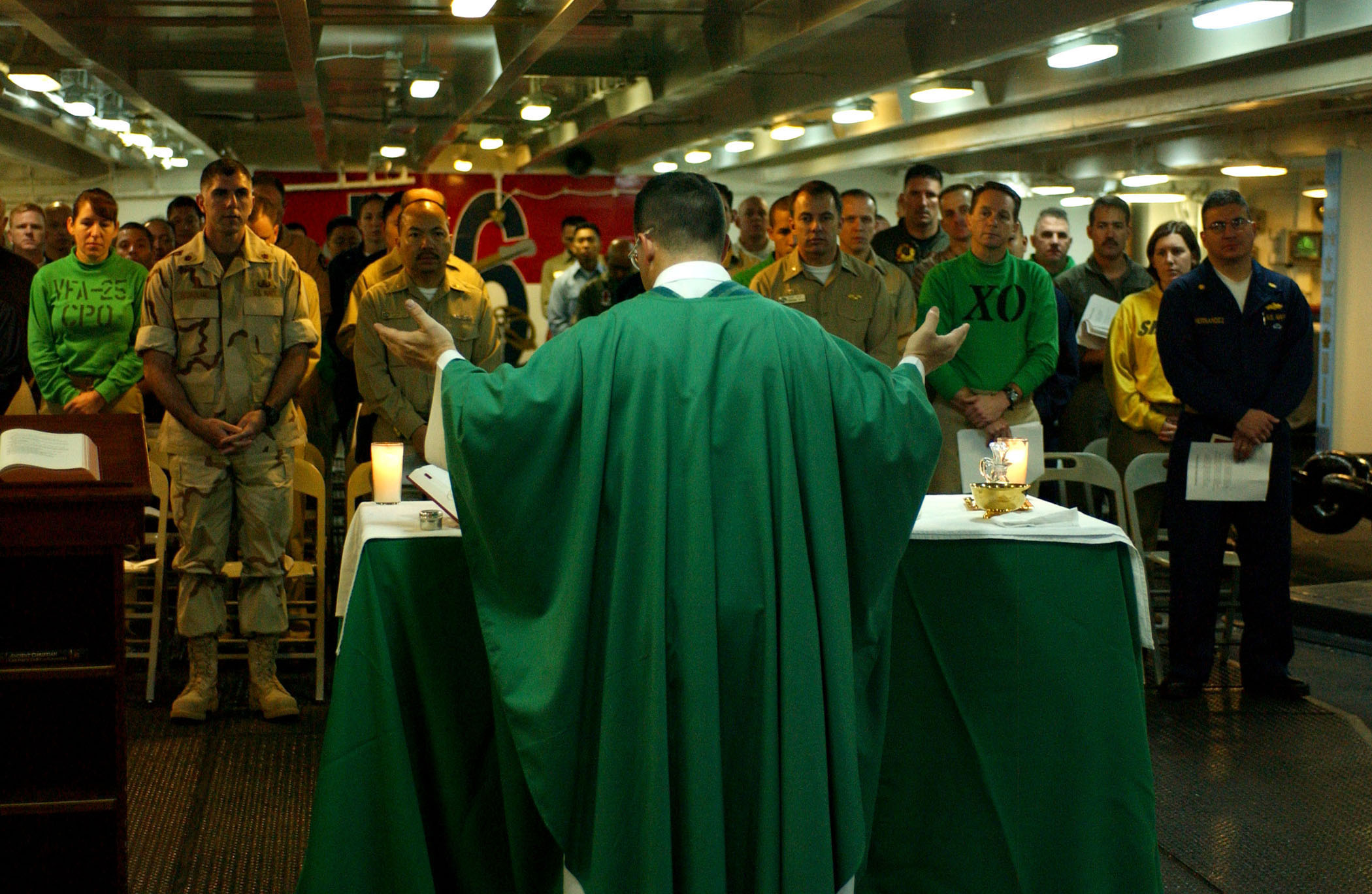GetReligion
March 29, 2011
http://www.getreligion.org/2011/03/abusive-priests-hiding-as-chaplains/
 |
The Newspaper That Lands In My Yard had an interesting story the other day that focused on what may be a new wrinkle in the ongoing sexual-abuse scandals that have rocked the clergy of the Catholic Church for three decades.
Let me first state that there may, in fact, be fire down under this latest cloud of smoke. However, the story contains some interesting gaps that need to be explored. Here’s the top of the Baltimore Sun report:
Advocates for victims of clergy abuse called … for an investigation into its allegations that the Catholic Church purposely funneled problem priests into the chaplain corps of the U.S. military.
Meeting with reporters outside the Downtown headquarters of the Archdiocese of Baltimore, Members of the Survivors Network of those Abused by Priests called for congressional hearings to determine “how frequently and why Catholic officials dumped predator priests on military bases.” And they distributed documents that they said showed that Archbishop Edwin F. O’Brien ignored sexual misconduct by chaplains when he headed the U.S. Archdiocese for the Military Services.
O’Brien’s spokesman called the allegations absurd, groundless and unsupported.
So how many priests are we talking about and what is the time frame for these crimes, especially in relation to the Catholic Church’s attempts to reform its procedures on handling these matters? Of special concern is the number of cases in the past five to 10 years.
The victims’ group, known as SNAP, released a list online … of roughly 100 priests who worked as chaplains in the military or in Veterans Affairs hospitals during the past 50 years and were accused of sexual misconduct either before, during or after their service. The names were compiled from public court, church and military records with help from BishopAccountability.org, which tracks abuse within the Catholic Church. SNAP Maryland Director Frank Dingle said they represent a sampling of perpetrators.
The personnel files of one Boston priest on the list contain a 1987 notation that he “fools around with kids,” according to newspaper accounts, yet the man was subsequently assigned to a VA hospital in Palo Alto. Calif. Another Boston priest who was accused of violence and sexual abuse against a preteen boy was later sent to work for the Army, according to personnel records available online.
“It’s a well-known policy,” said SNAP member Jim Moran, a retired Navy chaplain who says he was abused by a priest. “If a priest was a problem … he was sent to a hospital, to the military.”
Several things must be said at this point — primarily that the story is flawed by the shifting references to the time frame for these alleged crimes.
Note that we are talking about 100 priests in the “past 50 years.”
This certainly includes a lengthy period of time before these scandals broke into the news and also events in the early stages of reform efforts by the U.S. Catholic Conference of Catholic Bishops and other groups (such as SNAP). For many of these years, the behind-the-scenes norm was, in fact, to move a troubled priest into a ministry setting in which he would have as little contact with children as possible. I am not saying that was wise or even legal. I am saying that removing someone from parish ministry and putting him in the company of adults — such as at a hospital or in the chaplaincy corps — was common.
The key question is whether this practice has continued. So, reporters must ask: What is the number of recent cases, cases that represent a secret flaunting of the tough policies that have emerged in recent years? Once again, we are talking about 100 documented cases in the “past 50 years.” Could the reporter possibly have asked a follow-up question for a narrower framework for this problem?
Let me mention one other thing. One does not simply decide to send a clergyperson into the ranks of the military chaplains. For starters, they need to qualify — in terms of age and physical conditioning — to get into the military. Have you checked the average age of Catholic priests lately? It was approaching 60, the last time I checked.
This story may, in fact, have found a sexual-abuse loophole that must be explored. This exploration needs to begin with some accusations and data focusing on the past decade. For cases preceding that, it would help to focus on priests who were moved onto military bases and into contact with families and children. This Sun report is a start, but a very weak one.
Any original material on these pages is copyright © BishopAccountability.org 2004. Reproduce freely with attribution.